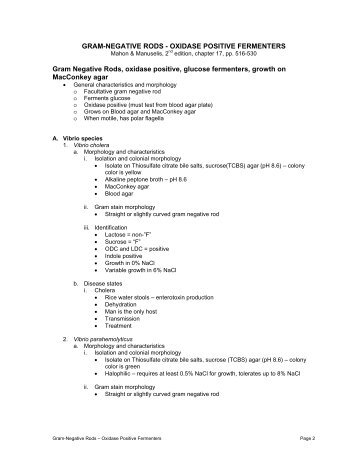

A positive test (OX+) will result in a color change violet to purple, within 10–30 seconds.After colonies have grown on the medium, 2-3 drops of the reagent DMPD are added to the surface of each organism to be tested. Fresh bacterial preparations should be used. The inoculated plates are incubated at 37 ☌ for 24–48 hours to establish colonies. In alternative manner, live bacteria cultivated on trypticase soy agar plates may be prepared using sterile technique with a single-line streak inoculation. If a color change does not occur within three minutes, the result is negative. If the area of inoculation turns dark-blue to maroon to almost black, then the result is positive. Observe the disk for up to three minutes.Use a loop to aseptically transfer a large mass of pure bacteria to the disk.Wet each disk with about four inoculating loops of deionized water.The end-product of this metabolism is either water or hydrogen peroxide (broken down by catalase). The cytochrome system is usually only present in aerobic organisms that are capable of using oxygen as the terminal electron acceptor. The oxidized reagent forms the colored compound indophenol blue.

The test reagent TMPD acts as an artificial electron donor for the enzyme oxidase. These both catalyze the transport of electrons from donor compounds ( NADH) to electron acceptors (usually oxygen). Oxidase-positive bacteria possess cytochrome oxidase or indophenol oxidase (an iron-containing hemoprotein). The reagent is a dark-blue to maroon color when oxidized, and colorless when reduced. The test uses disks impregnated with a reagent such as N,N,N′,N′-tetramethyl- p-phenylenediamine, TMPD (or N,N-dimethyl- p-phenylenediamine, DMPD, which is also a redox indicator). OX− normally means the bacterium does not contain cytochrome c oxidase and, therefore, either cannot use oxygen for energy production with an electron transfer chain or employs a different cytochrome for transferring electrons to oxygen.Įnterobacteriaceae are typically OX−. Legionella pneumophila may be oxidase-positive. Many Gram-negative, spiral curved rods are also oxidase-positive, which includes Helicobacter pylori, Vibrio cholerae, and Campylobacter jejuni. The Gram-negative diplococci Neisseria and Moraxella are oxidase-positive. OX+ normally means the bacterium contains cytochrome c oxidase (also known as Complex IV) and can therefore use oxygen for energy production by converting O 2 to H 2O 2 or H 2O with an electron transfer chain. Strains may be either oxidase-positive (OX+) or oxidase-negative (OX-). It is also used to differentiate pseudomonads from related species. The test is used as an aid for the differentiation of Neisseria, Moraxella, Campylobacter and Pasteurella species (oxidase positive). The oxidase test is used to determine if an organism possesses the cytochrome c oxidase enzyme. Microbiological and biochemical method for identification


 0 kommentar(er)
0 kommentar(er)
